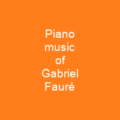What is a Song?
A song is more than just a melody; it’s the voice of humanity itself, carrying emotions and stories through time. Think about it—how many times have you found yourself humming along to a tune that perfectly captures your feelings? That’s the magic of songs. They are the musical expressions of our lives, wrapped in patterns of sound and silence, often within a structured format like ABA form.
The Human Voice as a Musical Instrument
Imagine the human voice as an instrument, capable of producing a cappella melodies or harmonies with the accompaniment of various musical instruments. The voice can be solo, in duets, trios, ensembles, or even large groups. It’s like a symphony orchestra, but all conducted by the singer.
Art Songs: A Symphony of Voice and Piano
Art songs are a special kind of song that require strong vocal technique and often feature piano accompaniment. These songs can be formally complicated, with the piano part considered an integral part of the composition. They trace their roots back to romantic love songs and religious songs, much like how troubadours and Elizabethan lutenists crafted their melodies.
Folk Songs: The Voice of the People
Folk songs are anonymous in origin, transmitted orally, and often a major aspect of national or cultural identity. They exist across cultures, with genres ranging from torch songs to rock, blues, soul, indie music, and rapping. Folk songs can become art songs when their origins are forgotten, much like how ‘D’ye ken John Peel’ remains a famous song about a foxhunter.
Sporting Songs: Celebrating the Great Outdoors
Sporting songs celebrate activities such as fox hunting and horse racing. While fewer current performers sing about boxers and successful racehorses, songs like ‘D’ye ken John Peel’ remain famous for their political incorrectness but enduring charm. The High Level Ranters and Martin Wyndham-Read recorded an album called “English Sporting Ballads” in 1977, featuring rarely heard hunting songs.
Lute Song Style: A Timeless Tradition
The lute song style emerged from late 16th to early 17th century England and France. Characterized by strophic form, homophonic texture, and accompaniment of a solo voice or instruments like the lute, bass viol, and more, these songs are a testament to the rich musical heritage of that era.
Part Songs: Secular Themes in Choral Music
Part songs are a type of choral music with secular themes for multiple vocal parts. They offer a unique blend of harmony and storytelling, making them a favorite among choirs and music enthusiasts alike.
Patter Songs: Fast Tempos and Rhythmic Patterns
Patter songs feature fast tempos with rapid succession of rhythmic patterns matching syllable length. These songs are perfect for comedic or satirical lyrics, adding a layer of humor to the musical experience.

In conclusion, songs are the heartbeats of our culture, carrying stories and emotions through time. From the anonymous folk songs that define national identities to the intricate art songs that require masterful vocal technique, each genre tells a unique story. So next time you hum along to your favorite tune, remember—the song is more than just music; it’s a piece of history, a reflection of our shared humanity.
You want to know more about Song?
This page is based on the article Song published in Wikipedia (retrieved on February 6, 2025) and was automatically summarized using artificial intelligence.






